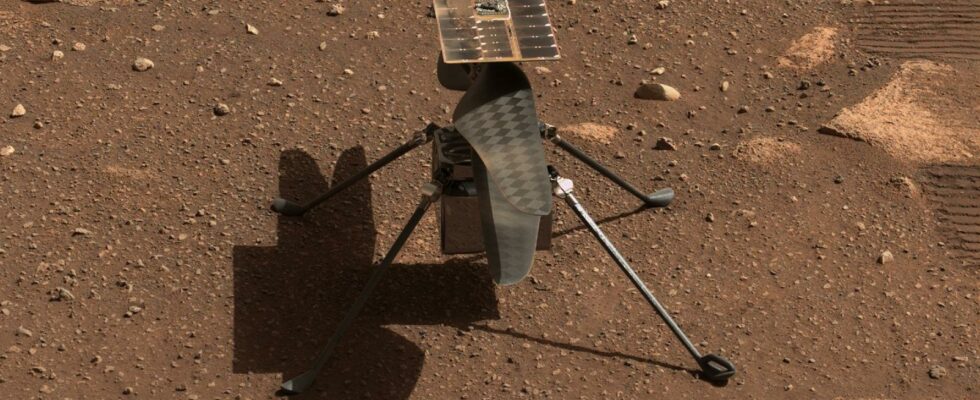THE small Ingenuity helicopter still flies on the red planet (already 66 trips under the clock) but in NASA laboratories, researchers and engineers are preparing the second generation! Bigger, heavier and more capable. A small revolution that didn’t even take a decade to see the light of day.
There are missions that have been prepared for decades and that change the landscape of knowledge, because their scientific means are new. But on the technical side, things are also moving… And sometimes quickly. When NASA agreed to board a small experimental helicopter under the Perseverance rover in 2018 for a first flight on Mars, it was above all a technological demonstration. However, it is changing the outlook for the future on Martian soil… Because Ingenuity still flies regularly, and it has even broken its own records in recent months. 66 flights, almost 2 hours of cumulative duration.
Behind the pure performance, the device caused immediate awareness about the future of Martian missions: from now on, flying could even become the norm. A few months ago, NASA validated the idea of using two helicopters to recover the samples deposited on the ground by the Perseverance rover and bring them back to a collection and takeoff site.
A new rotor that works hard!
The development team at JPL (California) recently completed initial tests in a vacuum chamber (Martian conditions) for a dual rotor system that appears identical to that of Ingenuity, but with several improvements. First, it is larger with 10cm longer propellers, slightly different aerodynamics and a more durable structure. Then, the motor tested in parallel showed good results for very high speed rotations: 3,500 revolutions/minute (or rpm), 750 more than Ingenuity!
Enough to have a better power reserve or carry a slightly heavier load. Indeed, Ingenuity only has a minimalist case, and weighs a total of 1.6 kg. Its successors will have to collect sample tubes, and will be equipped with four small wheels instead of rigid feet, without forgetting that they will need better autonomy (and therefore a little more solar charging). While remaining as light as possible. These rotor tests are therefore a crucial moment to unlock new capabilities on Mars!
The helicopters are there, but the rest…?
The development of flying devices for future Martian missions is almost no longer debated, given the success of Ingenuity. However, the “Mars Sample Return” mission is currently in the spotlight, and that is not a good thing… Funding levels are too low (NASA is under pressure from politicians for its lunar missions ) and takeoff risks being pushed back to the end of the decade. At the risk of seeing Chinese samples “deprive them of priority”.
Boldness is not everything… But in the long term, because there is still a lot to discover on Mars, it is a safe bet that other flying devices will appear, depending on the missions.
Source : Universe Today

0